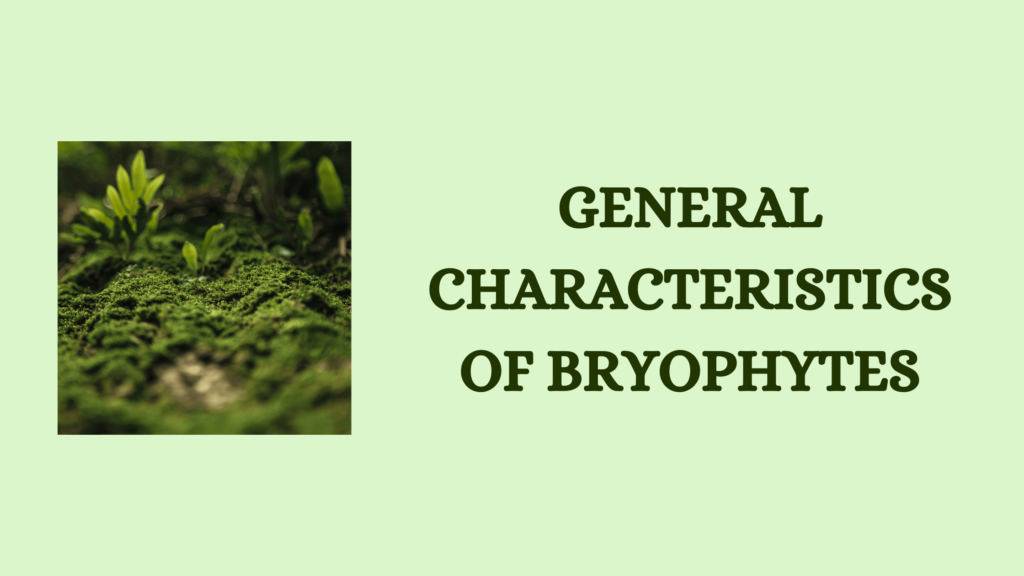Bryophytes and pteridophytes are spore-bearing plants that are part of called. Cryptograms are non-flowering, non-seeded, and spore-bearing plants. The word cryptogam is derived from the Greek word Cryptogamia, which means hidden reproduction. Cryptogams include microscopic algae and fungi, as well as macroscopic plants such as bryophytes and pteridophytes. These plants are considered primitive from an evolutionary perspective. They are autotrophic and reproduce through various methods including sexual reproduction. We will discuss their similarities and differences here.
What are Bryophytes?
Bryophytes are non-vascular plants that grow in moist and shady areas. They are small plants that are millimeters or centimeters in height. Since they prefer more moist areas to grow, they are considered the amphibians of the Plant Kingdom.
They have an undifferentiated plant body with no distinction of leaf, stem, or roots. They just have a leafy plant body and some root-like rhizoids. The rhizoids are not water-absorbing and are used to anchor the plant to the substrate. The whale plant body can absorb moisture from the environment.
Bryophytes are classified into Marchantiophyta or liverworts, Anthocerotophyta or hornworts, and Bryophyta or mosses.
What are Pteridophytes?
Pteridophytes are the next group of plants that are believed to have evolved from the bryophytes. Pteridophytes form the second-most diverse plants on earth, after the flowering plants. Most of these are terrestrial plants but many are epiphytes and parasites as well. They have a distinct plant body with leaves, stems, and roots.
Although they are an advanced group of plants, pteridophytes do not produce flowers or seeds. These are spore-producing diploid plants. The plant body can grow from a few centimeters to several meters in both height and length.
They are vascular plants with xylem and phloem. The vascular system of ferns is distinctive from other pteridophytes. They have distinctive gaps present in between the xylem and phloem.
Similarities Between Bryophytes And Pteridophytes
Bryophytes and pteridophytes are two groups of plants that share several similarities in various aspects of their life cycles. Although they are different in size and complexity, they exhibit similarities in several areas.
- Both bryophytes and pteridophytes have multicellular sex organs having a sterile protective layer over them.
- They are dependent on water to facilitate the movement of ciliated male gametes to reach the female gametes and for fertilization to occur.
- Similarities between bryophytes and pteridophytes are also seen in the formation of a zygote that develops into an embryo.
- The thallus-like gametophytes of some bryophytes are similar to the thalloid gametophytes of some pteridophytes such as Equisetum.
- The terminal capsule of some mosses is similar to the terminal sporangia of Psilophytales.
- Both bryophytes and pteridophytes exhibit heteromorphic types of alternation of generation.
Differences between Bryophytes and Pteridophytes
Despite their similarities, there are differences between bryophytes and pteridophytes, which are listed below.
| BRYOPHYTES | PTERIDOPHYTES |
| Bryophytes are non-vascualr embryophytes. | Pteridophytes are vascular plants or cryptogams. |
| Seen in moist and shabby habitats. | Grows in terrestrial habitats. |
| The independent plant body is the gametophyte. | The plant body is sporophyte. |
| Sporophytes is dependent on gametophytes. | Sporophyte is independent of the gametophyte. |
| The plant body is thalloid or leaf-like. | The plant body is differentiated into stems, leaves, and roots. |
| Plant body cells are haploid. | Plant body cells are diploid. |
| Lacks xylem and phloem. | Well-developed xylem and phloem visible. |
| The archegonial neck is long. | Archegonial neck is short. |
| No spores are produced. | Spores are produced in sporangia. |
Such similarities indicate that bryophytes had been the ancestors of pteridophytes to evolve as more developed terrestrial plants with well-developed vascular bundles.
References
- https://www.researchgate.net/publication/318305486_Difference_Between_Bryophytes_and_Pteridophytes
- Abraham P C. Bryophytes, Pteridophytes, Gymnosperms & Paleobotany. 2000. St. Mary’s Books & Publications.
- https://www.hrmrajgurunagar.ac.in/uploads/student_corner/Introduction_to_cryptogams_(1).pdf




